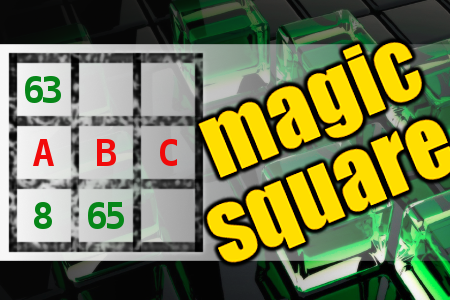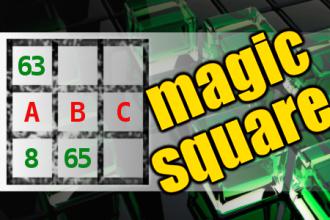MAGIC SQUARE: Calculate A-B*C
The aim is to place the some numbers from the list (8, 9, 11, 16, 17, 18, 20, 62, 63, 65, 84) into the empty squares and squares marked with A, B an C. Sum of each row and column should be equal. All the numbers of the magic square must be different. Find values for A, B, and C. Solution is A-B*C.Correct answers: 1
#brainteasers #math #magicsquare

There was a blonde who was sic...
There was a blonde who was sick of all the blonde jokes. One day, she decided to get a make over, so she cut and dyed her hair. She went driving down a country road and came across a herd of sheep. She stopped and called the sheep herder over."Tell you what. I have a proposition for you," said the woman.
"If I can guess the exact number of sheep in your flock, can I take one home?"
"Sure," said the sheep herder. So, she sat up and looked at the herd for a second and then replied "382".
"Wow!" said the herder.
"That is exactly right. Go ahead and pick out the sheep you want to take home." So the woman went and picked one out and put it in her car.
Then, the herder said, "Okay, now I have a proposition for you".
"What is it?" queried the woman.
"If I can guess the real color of your hair, can I have my dog back?"
"If I can guess the exact number of sheep in your flock, can I take one home?"
"Sure," said the sheep herder. So, she sat up and looked at the herd for a second and then replied "382".
"Wow!" said the herder.
"That is exactly right. Go ahead and pick out the sheep you want to take home." So the woman went and picked one out and put it in her car.
Then, the herder said, "Okay, now I have a proposition for you".
"What is it?" queried the woman.
"If I can guess the real color of your hair, can I have my dog back?"

